On Canadian wheat fields, a silent threat is shriveling the golden yields of wheat.
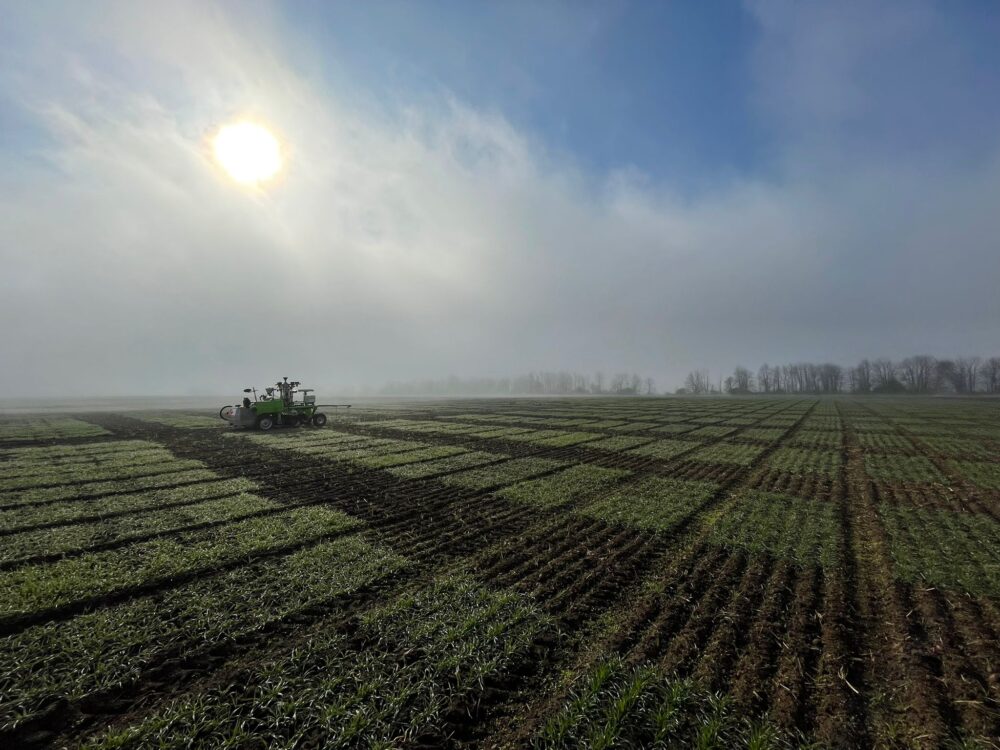
Fusarium head blight (FHB), a disease caused by a fungal pathogen, is devastating crops, producing mycotoxins that can rapidly damage plants, wither the kernels in the head of wheat and cost the economy billions of dollars in damaged goods.
Climate change is only fanning the fungus. Hotter temperatures and heavier rainfall are the ideal breeding ground for the FHB pathogen, as more spores are released in the warm, moist conditions becoming increasingly common on Ontario’s farms.
On the frontlines of this battle is Dr. Helen Booker, leader of the wheat breeding program at the University of Guelph. For the last four years, the plant agriculture professor has been meticulously breeding wheat varieties to withstand FHB and other diseases and testing them at sites in Ontario’s network of crop research centres.
As Canada is a global supplier of wheat, and the majority of winter wheat is produced in Ontario, Booker’s hope is to give farmers a fighting chance to ensure that wheat remains a dependable source of food for the entire world.
“Our lab was considered essential during the pandemic,” Booker says. “We can’t just stop. And because the end-use market for most winter wheat in Ontario is for the production of flour for pastries, pizza dough and bread, we can’t have contaminated grain. That’s not an option.”
From breeding to bread: How to give the world healthy grains
Booker’s wheat breeding program is a feat of industry and government collaboration to supply the world with healthy grains. Together with private and public partners and a team of professional staff, graduate and undergraduate students, she breeds varieties for disease resistance but also for traits economically critical to farmers: high yield, optimal maturity time, height and structural strength.
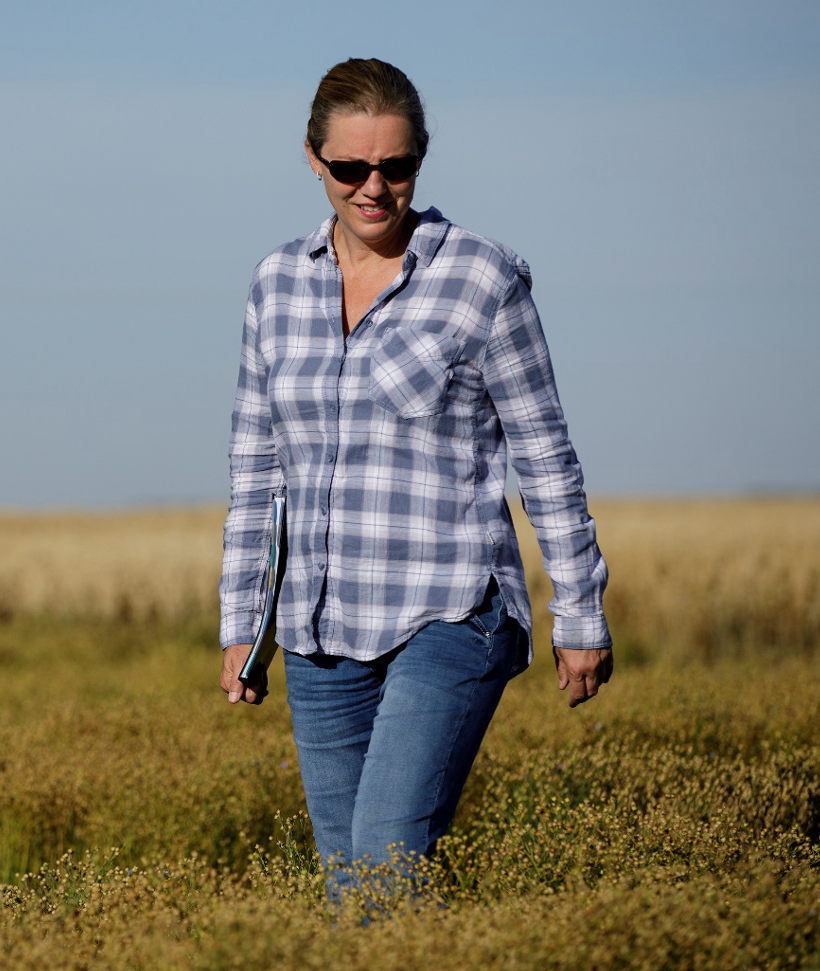
Since Booker took over leadership in 2020, the program has already brought five new varieties of wheat to market.
One standout is OAC Constellation, named in honour of the Ontario Agricultural College (OAC). It is the first Canadian eastern soft red winter wheat release that’s now considered the standard by which other similar varieties are tested.
Others, like OAC Virgo and OAC Moon, are the keys to our cakes, pastries, cereals, crackers and biscuits.
“It’s a constant battle for improvement and staying ahead of the pathogen,” Booker says, as one new seed represents years of careful genetic selection, disease-resistance testing and field trials. “We need collaboration to get all the information we need.”
To craft the perfect wheat, Booker essentially crosses elite parent lines to create multiple generations of crops containing ideal traits. Wheat rusts are introduced to these test crops to identify survivors with natural resistance that will advance through the program.
Many generations later, the wheat becomes genetically stable enough for larger-scale testing. A specialized small plot combine has proved critical for that stage. The combine harvests experimental plots of wheat and accurately measures traits, like yield and grain quality, at the field level. With an investment from the Sustainable Canadian Agricultural Partnership (CAP), a five-year, federal-provincial-territorial initiative, the combine can be found on the field now and is shared among many other breeding programs at the site.
As for FHB, Booker’s program runs one of the three fusarium screening nurseries in Ontario, where wheat lines are given the fungal pathogen that causes FHB and maintained under mist irrigation to promote disease development. Researchers then identify genetic resistance in the wheat breeding lines by estimating the incidence and severity of the disease.
Throughout testing, Booker’s lab works with collaborators across the region who bring their specialties to gather more data. U of G’s Dr. Shu Chen, senior research scientist and manager at the Agriculture and Food Laboratory, studies the metagenomics of FHB to better understand the pathogen, while trials at research centres across the province ensure that the wheat can adapt to Ontario’s diverse environments. Specialized labs conduct detailed analyses on the wheat kernels themselves to measure specific end-use traits.
If minimum requirements are met – that is, the wheat has specific agronomic, end-use kernel quality and disease resistance traits – and if the variety is proven stable, uniform and distinct from others, it can be registered as a new cultivar and distributed to the market, where it eventually finds its way down the chain and into our homes.
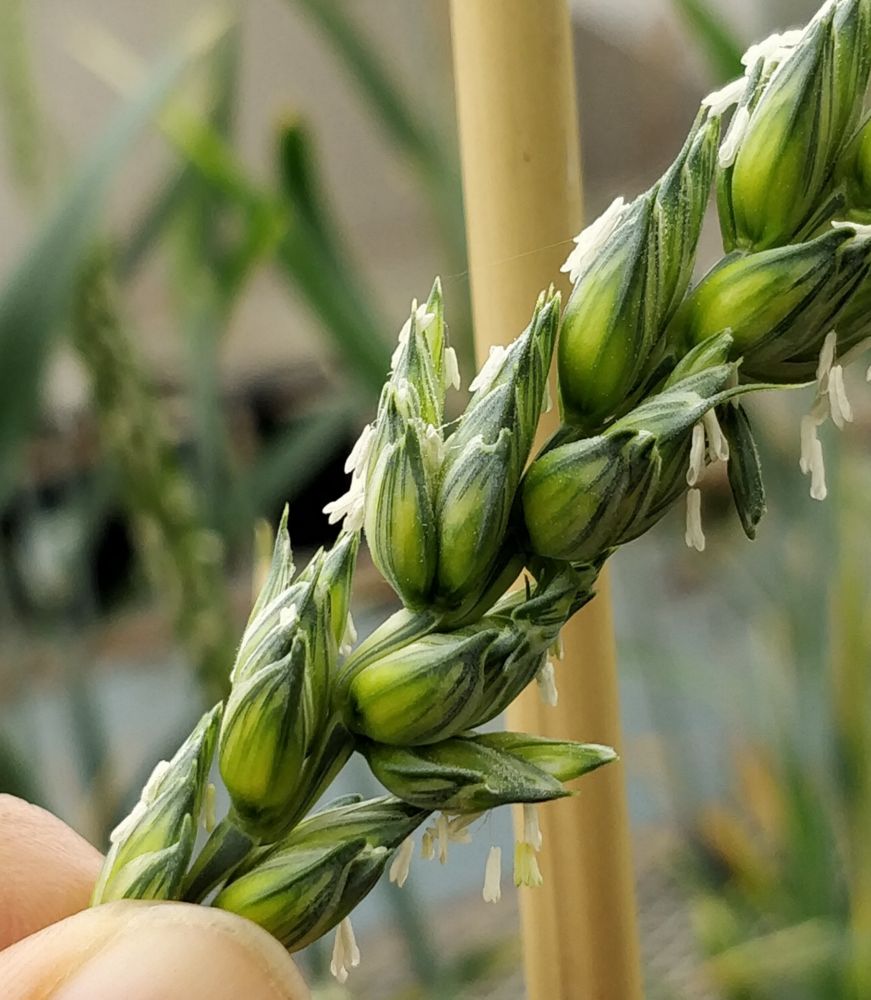
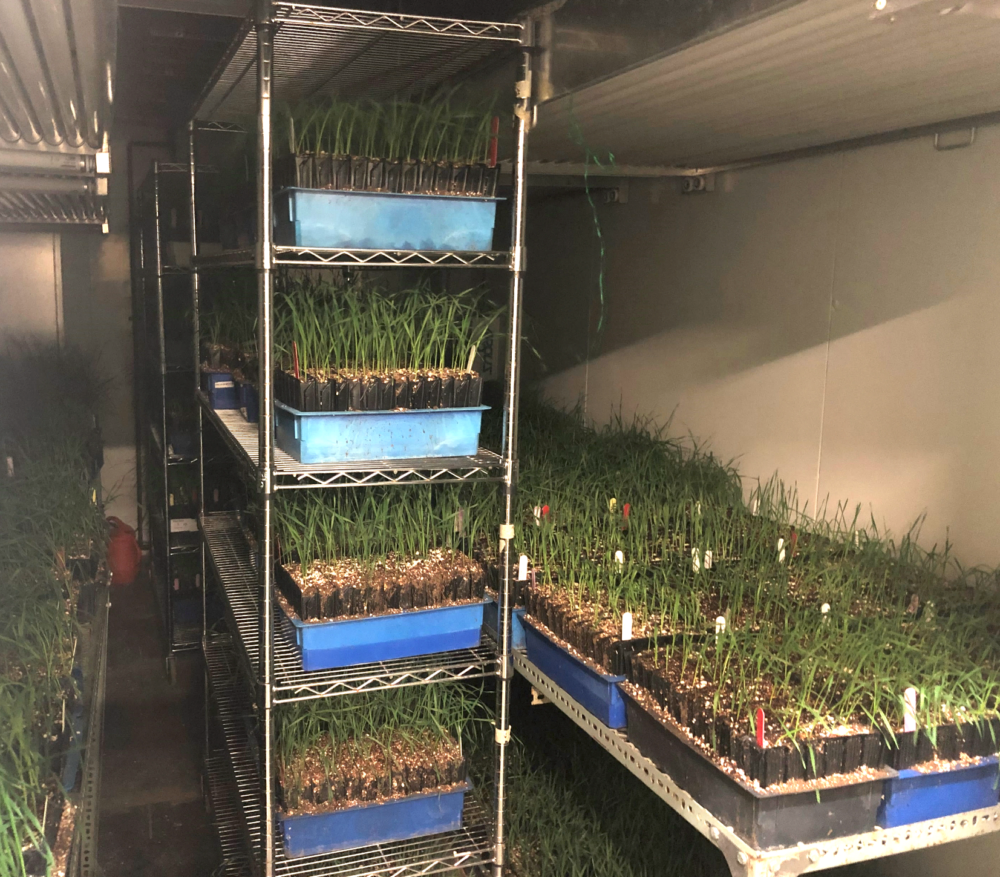
Researchers breed and grow early generations of wheat to screen for desirable traits.
‘Working together is the only way’
Initiated in 2014, the wheat breeding program was formed as a partnership between U of G, Grain Farmers of Ontario (GFO) and SeCan. These organizations represent a large network of grain farmers and seed-growing companies in Canada, with Booker herself filling the GFO professorship in wheat breeding and genetics. The research locations – the Ontario Crops Research Centre sites in Elora and Ridgetown – are owned by Agricultural Research and Innovation Ontario (ARIO) and managed by U of G through the Ontario Agri-Food Innovation Alliance.
“Breeding in crops is all about adaptation, and so multiple sites are needed,” Booker says. “People want to work with us because we have access to sites through the Alliance. Working together is the only way to do it.”
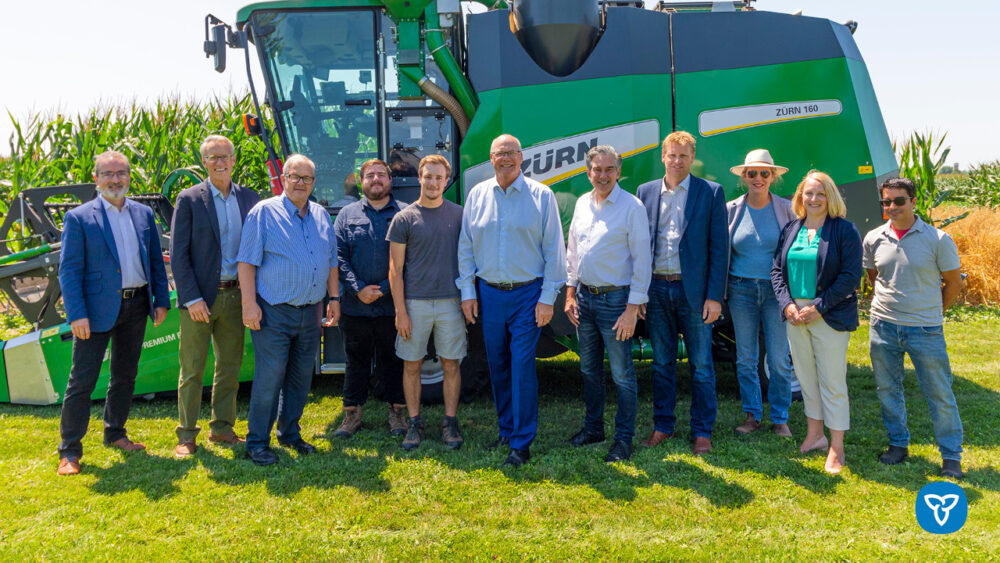
Booker took over the program in 2020 following the passing of the previous leader, a beloved student mentor and researcher, Prof. Alireza Navabi.
“I came into a supportive environment when there was a gap in leadership, and people really came together,” Booker says. “Now my role is to steward the program, and then lead it onto the next generation.”
AI solutions point to future of wheat breeding
The next generation has already begun the work. Thanks to two of Booker’s graduate students, Riley McConachie and Connor Belot, a free app will allow farmers to take a photo of their wheat plot using their smartphones and receive a near-instant analysis of wheat head infection levels.
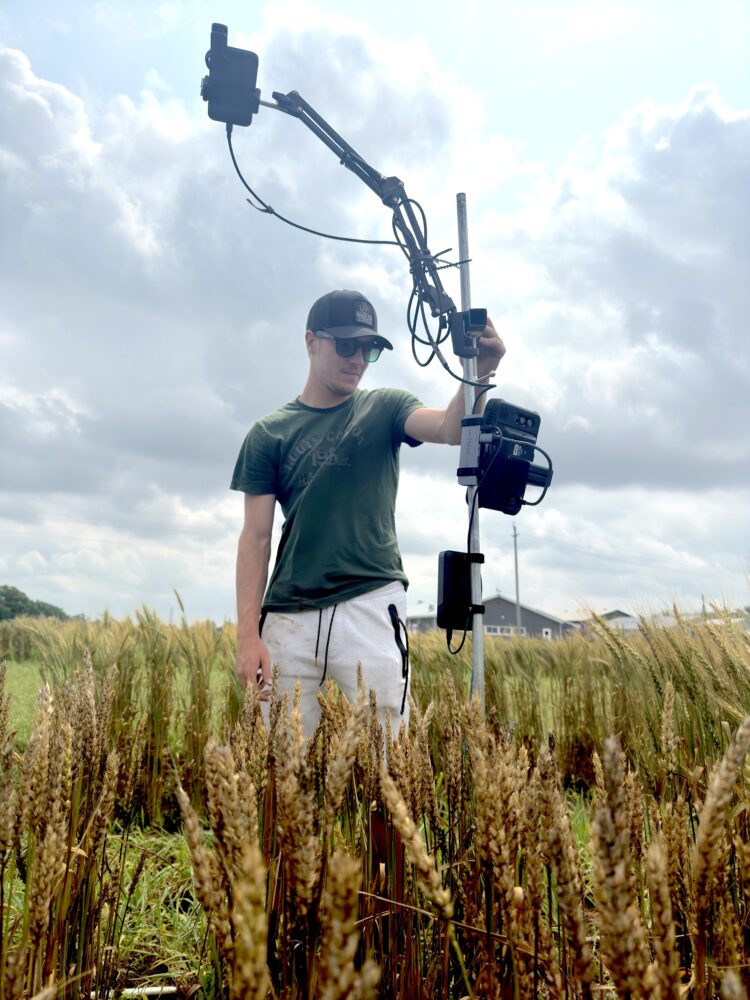
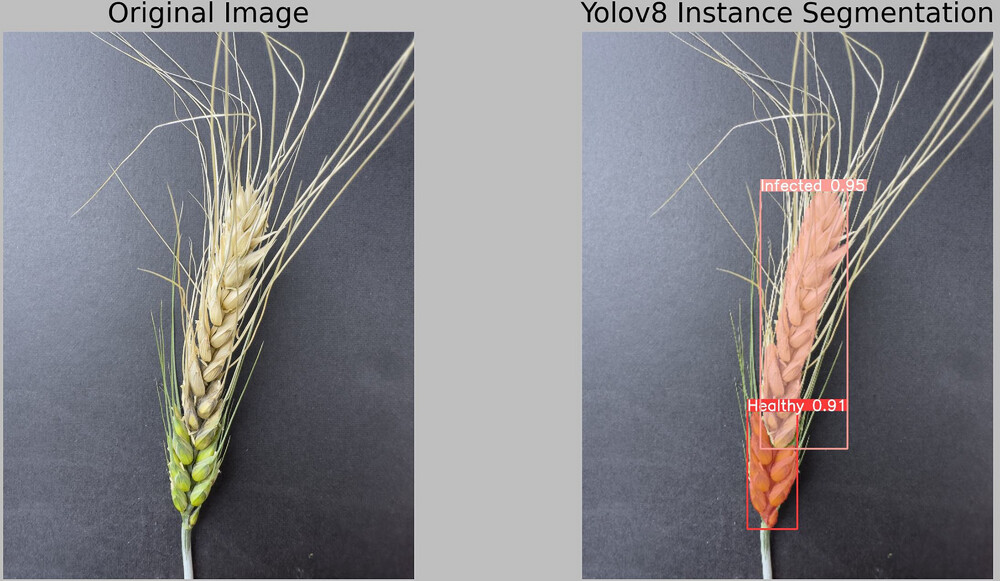
“Riley’s research has built the technology that allows you to take a picture of a wheat plot and evaluate the disease,” Belot says. “My research asks: How do you scale that up to the field level? That involves developing some way to use satellites or drones to get a field-level average.”
“It’s worked out better than I think anybody would have expected,” McConachie says. He adds the app is about 86 per cent accurate on the field level, improving with better technology and deep learning capabilities every year.
Assessing FHB manually – that is, standing on the field and trying to visually determine its severity over hundreds of wheat heads – is time-consuming, subjective and inaccurate. Many foliar (leaf) disease signs include hard-to-spot brown or orange discolourations, which could be easily confused with things like hail damage.
The app could prevent those costly human errors. By meticulously labelling field images of wheat plots, McConachie and Belot trained one open-source, deep-learning technology to create a perfect outline of the wheat head.
U of G students get ready for future of agriculture
The artificial intelligence (AI) model students trained, YOLOv8, identifies the general whereabouts of the wheat head. They incorporate it with another model, Segment Anything by Meta AI, that uses this general location and traces an accurate image of the head that filters out any background information.
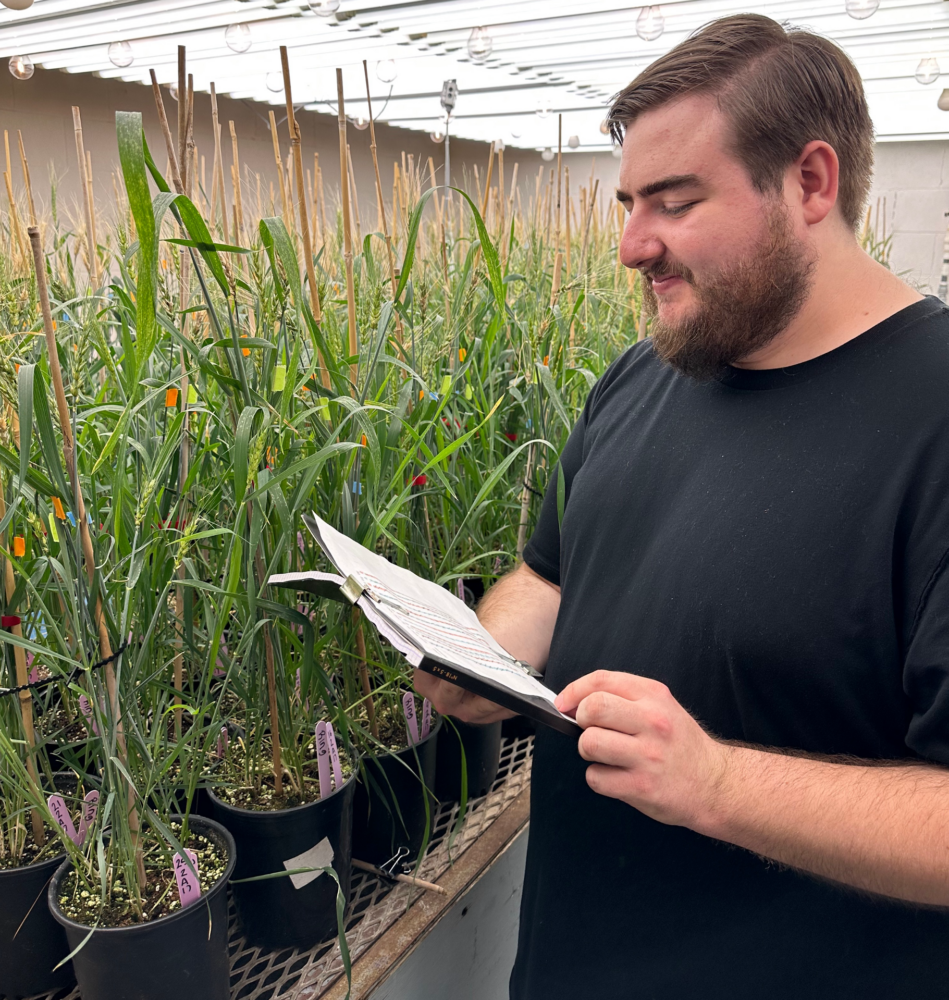
From there, the app applies a spectral index. This essentially uses the different red, blue and green values captured by a cellphone to determine if the wheat head is diseased, and by how much.
As McConachie describes, integrating these AI models with spectral index has not been done before. The two worked closely with Dr. John Sulik, plant agriculture professor at U of G, who they say was critical in helping develop and test the methods.
“Spectral index isn’t anything new, but people kind of forgot you could use it like this,” McConachie says. “We brought back something that was on the fringe, concepts developed by NASA in the ‘70s, and then we combined that with deep learning to create a completely new approach.”
The two hope the app will be ready as early as next year, bringing farmers yet another powerful solution to FHB.
In the face of climate change and food insecurity, Booker and her students continue their essential work to help put bread on the table.
Along the way, hands-on experience provided by Booker and her team of researchers helps students like McConachie and Belot refine their industry knowledge, learn new methods and gain valuable leadership and problem-solving skills to succeed as part of Ontario’s agri-food workforce.
And though the battle between wheat and fungus rages on, with every new seed and technological innovation, farmers may just be ready for the fight.
Contact:
Dr. Helen Booker
hbooker@uoguelph.ca
